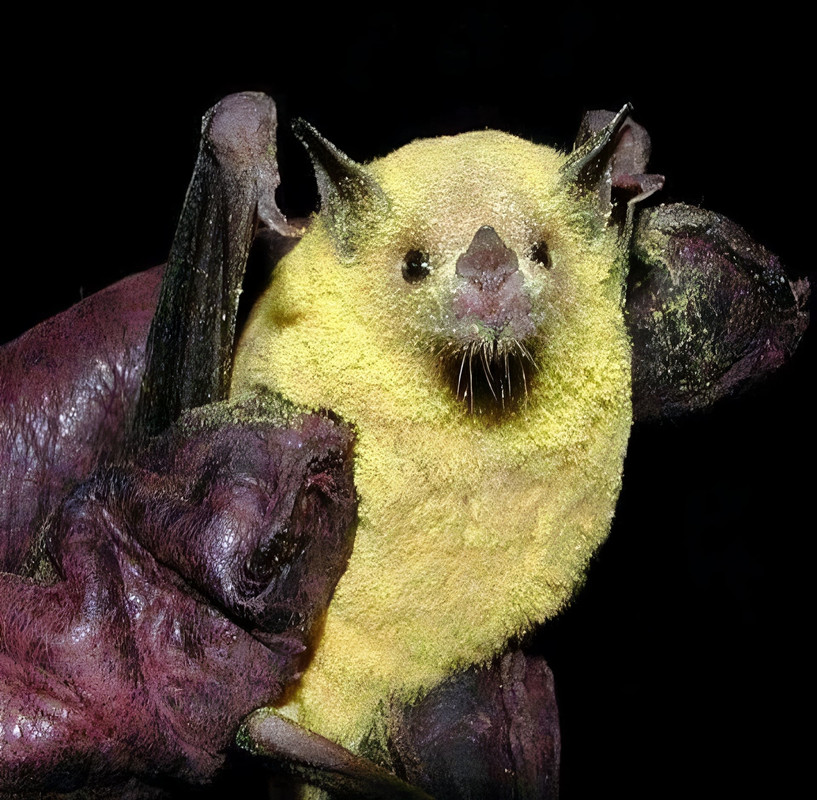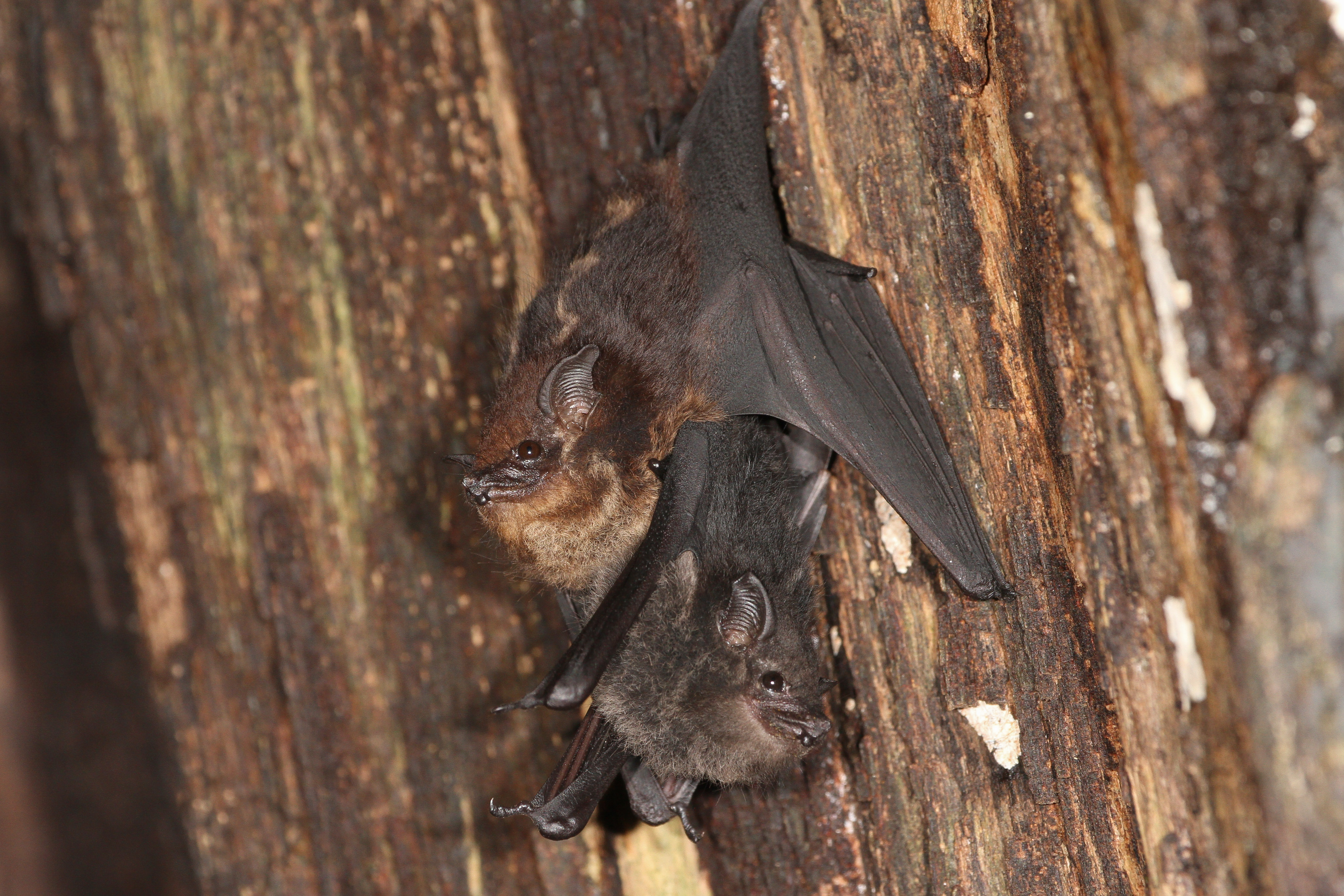For this Halloween, I would like to introduce you all to the SCARIEST thing imaginable...
People misunderstanding animals!
Truly frightening, I know.
In all seriousness, we use several animals to help represent the spooky season - and understandably so! Unknown creatures can be frightening! But fear is often accompanied by hatred and disgust, which can cause issues when it comes to protecting animals deemed "frightening" or "gross". So, for 32Bit Cafe's Halloween event, I'd like to take the chance to talk about an animal that is widely disliked (in the western, English-speaking culture I'm a part of) - bats! Why bats? They're just the ones I know the most about. Also, vampire bats.

Compilation of many bat species. Image from Wikimedia. Source.
NOTE: There are many bat species out there, all with different traits! All of this is a large generalization with occasional spot lights on particular species.
Why are bats important?
Like any other animal species, bats play a critical role in the ecosystems they're found in. Ecosystems are kind of like Jenga towers; remove one block, and the whole structure becomes less stable. Or maybe it'll just crash onto your head. Trust me, that hurts. Nectar-eating bats are important pollinators, insect-eating bats help control insect populations, and both provide countless other creatures with vital nutrients in the form of their guano (or poop). Waste not, want not. Oh! This guano also helps spread seeds, at least when it comes to bats that eat fruit.

A lesser long-nosed bat who got too lost in the sauce and got coated in pollen. Image from National Park Service.
And if you're the sort that needs more human-centric reasons to care (though I'd say not living on a barren world is a pretty good deal), their pollination and insect hunting does directly help humans! In the US alone, bats naturally hunting pests save farmers billions of dollars in pest control. Many species of bat also help pollinate Agave tequilana in particular. So they help make tequila B)
Don't they spread disease?
Yes. So does every other wild animal. It's just the reality of living out in the wild without access to veterinarians.
Of course, bats are particularly good at this. The fact that they live in large colonies means disease easily spreads between them . Their ability to fly and carry these diseases over large distances also doesn't help on this front. Actually, their ability to fly is why they don't succumb to the diseases they catch; traits they developed in order to remain healthy during flight also helps to keep them from dying of most illnesses .
Did you know bats are very sociable?
Bats live in large groups called colonies, which all bundle up together in caves!

Hibernating Indiana bats, Wyandotte Cave, IN. Photo taken from the U.S. Fish and Wildlife Service. Source

Fruit Bats of Samal Island roosting together. Photo taken from Wikimedia. Source.
These groups are not static - they split apart and merge with other groups on a regular basis . Despite this, at least one species of bats - Bechstein's bats - have been found to still maintain their relationships with other bats even if they've been apart for a while . They make friends with each other!
Vampire bats in particular have strong social bonds. They'll share their food with each other , though this is done primarily between females . This is particularly important for vampire bats, as they're more prone to starvation - making friends and sharing food helps ensure that they'll all get enough to eat. The friendship thing is important too! It was found that vampire bats that exclusively share food with kin struggle a lot more than those willing to make bonds with other bats . Groups of vampire bats who were captured and kept temporarily in a lab were also found to usually stick together even after they were released .
They even "talk" to each other!
Being such a social species, they communicate frequently - and are able to share relatively complex ideas with each other . They're even able to tell who a message came from and who it is directed towards . Though a lot of the "conversations" in this study were squabbles over food and mates... but still . Better to argue with "words" than with teeth. They can also listen in on what other bats are doing to find the best bug-hunting spots .

A Saccopteryx bilineata mother and her baby. Photo taken from The Smithsonian. Source.
Oh, there's also at least one bat species - Saccopteryx bilineata - which learns to communicate via babbling and imitating adults . This is adorable, and it implies their communication abilities are learned rather than inherent instinct.
Save the Bats!
Unfortunately, due to habitat loss (among other factors), a large number of bat species are at risk of extinction. North American bats are particularly vulnerable, as an invasive species of fungal infection spreads rapidly across the continent. It's known as white-nose syndrome, and it causes bats to wake up from hibernation early and fly around during winter when there's no food .
So, I figured the best way to end this off was to provide some links to charities and organizations dedicated to helping bats.
Bat Conservation International
White-Nose Syndrome Response Team
Citations
All citations are free-of-charge. Even the science articles.
North American Bat Monitoring Program: What Is So Special About Bats?
White-Nose Syndrome Responnse Team: Why Care?
IFL Science: Why do Bats Transmit so Many Diseases? probably the least trustworthy one here, but the only one I could find on this topic that wasn't paywalled :P
Smithsonian: Bound by Blood: Vampire Bat Bonding Persists From the Lab to the Wild
NIH: Does food sharing in vampire bats demonstrate reciprocity?
Smithsonian: Friends Help Female Vampire Bats Cope With Loss Note: this one's title is a little misleading. The TL;DR is that vampire bats heavily rely on others feeding them to survive. Vampire bats willing to play nice with other vamps outside of their family are more likely to survive.
NIH: Everyday bat vocalizations contain information about emitter, addressee, context, and behavior
Smithsonian: Bats Use Private and Social Information As They Hunt
White-Nose Syndrome Response Team: What Is White-nose Syndrome?Extra Credits
Background image is from sadgrl.online's collection (warning for flashing images).